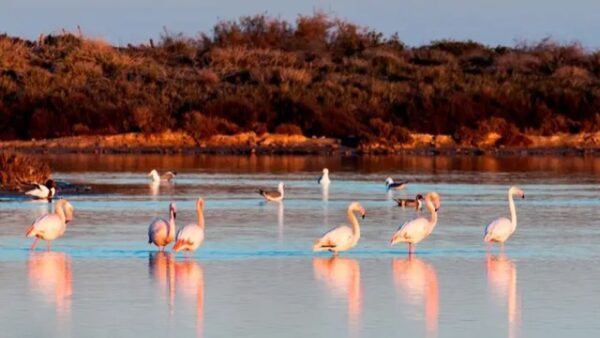Saturday 30th September
In spite of the two blokes waking us up in the night, all four of us had an undisturbed night; well done doggies👍👍
We are not going anywhere today, it is a day of cleaning and relaxing, though the car park is filling up earlier than usual, locals getting their spot for the day.

We had lived in and around this general area and walked numerous dogs around this “Regional Park” over the past 18-years but have never wondered why these salt pans were started, why they are here and their history, so today I’ve done a little in investigative work and I am “gobsmacked”, I had no idea “salt” had played such a part in history other than preserving food before refrigeration and clearing ice on the roads.

Salt extracted from the sea has been produced in the “Salinas del San Pedro Pinatar” for a long time; Excavations in front of these beaches in 1945 discovered ceramics dating back to the Carthaginians, even before the Romans arrived around the 2nd century BC and were used for keeping salt. Apparently there were many uses for this salt, two in particular around that time, one was to produce “Garum” (a fermented fish sauce condiment made up of macerated Mackerel and preserved in the salt) widely used in the Mediterranean area from the time of the Phoenicians to after Roman times. The second reason vast amounts of salt was needed around that time was the ritual of “Punic Salt” (conquerors spreading salt on the defeated’s land) which “apparently?.” carried on well into the Middle Ages by the Spanish and Portuguese.

Salt from this area was discontinuous until the 13th century when King Alfonso X ensured that it was harvested regularly and used exclusively by the monarchy; as a result, the salt flats belonged to the Crown until the 19th Century. During these six centuries, the Crown had the monopoly of the exploitation and sale of salt, fixing and regulating prices (known as the “salt pond”) and becoming one of the major sources of taxes. This continued until the law changed in 1879 and the production was commercialised. Sometimes one never really knows what’s around them and this area is a very good example of that.

After our “chores” we headed onto the beach, found a quiet spot and exhausted the dogs with the ball being thrown into the sea before returning for a refreshing “gin and tonic” and a special meal; Duck breast with all the trimmings and one of our bottles of Burgundy from Chusclan. I then settled to watch Fiji beat Georgia 17 – 12 and Scotland thrash Rumania 84 – 0 before heading to bed.
